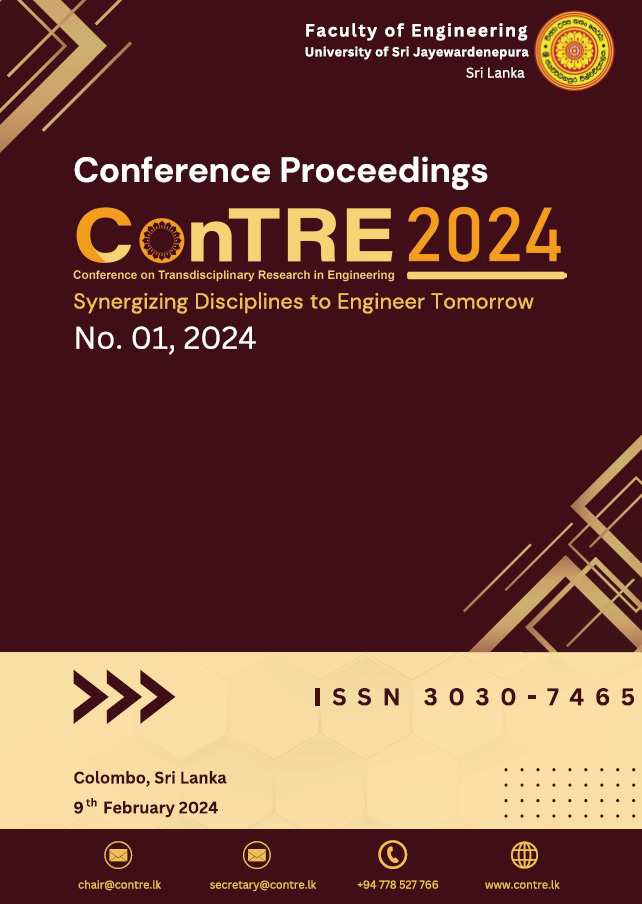Emission calibrated traffic model for environmental-sensitive decision making in Sri Lanka: Review
DOI:
https://doi.org/10.31357/contre.v1i1.7400Keywords:
Emission-calibrated traffic model, Traffic Management, Sri Lanka, Air pollution, Urban transportationAbstract
Air pollution from road transportation is a growing concern in urban areas, particularly in Sri Lanka, where vehicle emissions account for a significant portion of air pollutants. The increase in the number of vehicles on the road and the resulting traffic congestion exacerbate this problem. Therefore, accurate prediction of emissions and air quality related to road traffic is essential for informed decision-making in traffic planning and management. While Sri Lanka has made progress in developing driving cycles and traffic flow simulations tailored to its unique context, there remains a gap in calibrating these models with local emission values, which are influenced by specific driver behaviours and operational modes. An emission-calibrated traffic model specific to the Sri Lankan context can integrate both traffic-related and environmental factors, providing a comprehensive tool for analyzing the impact of traffic management strategies on emissions and air quality. By addressing the discrepancies between global manufacturer data and local conditions, this model can enable more environmentally friendly decisions in urban transportation planning, contributing to the reduction of air pollution. The study identifies, through a comprehensive review, the need for an emission-calibrated traffic model to address the unique challenges posed by Sri Lanka's evolving traffic landscape. While traffic modelling has made strides in Sri Lanka, this study identifies a significant research gap in modelling the emissions generated by these traffic models, especially considering the unique characteristics of the region's roads and vehicles. Further, the paper concludes that an emission-calibrated traffic model specifically tailored to the Sri Lankan context is essential to guide environmentally friendly traffic planning decisions and bridge the gap between traffic data and its environmental consequences.


